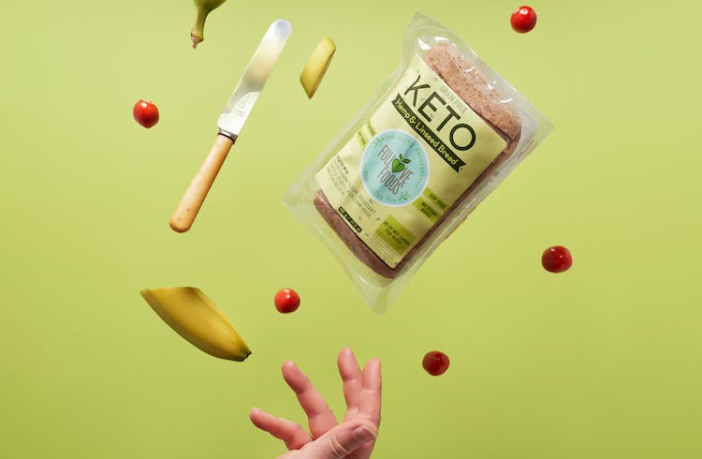The ketogenic diet is a high-fat, low-carbohydrate eating plan that has been gaining popularity in recent years. The goal of the keto diet is to put your body into a state of ketosis, which means it starts burning fat for energy instead of carbs. While following this type of diet can be challenging and restrictive at first, there are many delicious foods that you can safely eat on the keto diet. In this article, we will discuss some of the best foods to include in your meals when following a ketogenic lifestyle. From protein sources to healthy fats and veggies, we’ll cover all the basics, so you can make sure you’re getting all the nutrition you need while still sticking to your dietary goals. So let’s get started!
1. High-fat proteins:
Protein is essential for muscle growth, maintenance, and repair. Some great sources of high-fat protein include fatty fish like salmon or tuna, as well as meats such as grass-fed beef and free-range chicken. Eggs are also a great source of healthy fats and can easily be incorporated into the diet. In addition, you can also include dairy products such as full-fat yogurt and cheese and nuts like almonds or walnuts for a nutritional boost. Moreover, adding some plant-based sources of protein to your meals, such as tofu or tempeh, can help you meet your daily needs.
2. Healthy fats:
Healthy fats are a cornerstone of the keto diet and should be included in every meal. Some delicious sources of healthy fats include avocados, nuts and seeds, coconut oil, ghee (clarified butter), extra-virgin olive oil, and grass-fed butter. These foods provide energy and promote good health while helping to keep you satisfied between meals. They also contain important nutrients like omega-3 fatty acids that are essential for overall wellness. For example, omega-3 fatty acids are known to reduce inflammation, improve cognitive function, and boost heart health. This type of healthy fat can easily be incorporated into your meals through sauces, dips, dressings, and more.
3. Non-starchy vegetables:
Non-starchy veggies are low in carbs and high in fiber and other essential nutrients. They should be the foundation of any keto meal plan since they provide critical vitamins, minerals, and antioxidants that help keep you healthy. Some great options include leafy greens like spinach or kale, cruciferous vegetables such as cauliflower or broccoli, bell peppers, mushrooms, zucchini, eggplant, cucumbers, and tomatoes. All these foods can be eaten raw or cooked in a variety of delicious dishes. This is a great way to ensure you’re getting all the nutrients your body needs while still following the ketogenic diet.
4. Low-carb kinds of milk:
Milk is a great source of calcium and other essential nutrients, but it’s usually high in carbs. Fortunately, there are some low-carb kinds of milk available that can fit into the keto diet. These include almond milk, coconut milk, flaxseed milk, and hemp milk. They contain fewer carbs than cow’s milk and provide healthy fats as well as protein for sustainable energy throughout the day. Plus, they’re incredibly versatile and can be used in smoothies or added to coffee or oatmeal for added flavor and nutrition. It might seem that the keto diet is complicated, but you just need to learn more before you start. This way, you’ll have a better understanding of what foods to include and avoid, so that you can enjoy the benefits of this diet while following your dietary goals.
5. Low-carb fruits:
Fruits are a great source of nutrition and can be enjoyed in moderation on the keto diet. Low-carb fruits like cantaloupe, watermelon, strawberries, blackberries, raspberries, blueberries, and kiwi are all excellent options. They contain fewer carbs than other fruit varieties and provide important vitamins and minerals that support overall health. Plus, they pair perfectly with healthy fats like nuts or seeds for an energizing snack or light meal. This is a great way to enjoy the sweet flavors of fruit while still following the keto diet. For example, you could enjoy a bowl of fresh berries topped with walnuts and a drizzle of almond butter for breakfast or a snack.
6. Fermented foods:
Fermented foods are an important part of the keto diet because they provide beneficial bacteria that can improve gut health and promote nutrient absorption. Some delicious fermented foods include kimchi, sauerkraut, kefir, yogurt, and tempeh. These foods contain probiotics which can help support digestion while reducing inflammation in the body. Plus, they’re rich in vitamins and minerals that are essential for any healthy eating plan.
The ketogenic diet is a great way to enjoy the benefits of healthy fats, non-starchy vegetables, low-carb kinds of milk, and low-carb fruits. By including these foods in your meal plan you can ensure that you are getting all the nutrients your body needs while still following this dietary approach. Additionally, fermented foods should be included as they provide beneficial bacteria for gut health and promote nutrient absorption. With some research and planning ahead of time, anyone can successfully follow the keto diet if it fits their lifestyle goals.


